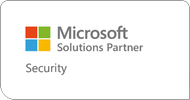

Data Security and
Governance
Protect your organization against major security risks and preserve its reputation.
Talk to an ExpertFortifying Data Integrity
Every business sits on growing terabytes of unstructured data that pose risks to the integrity of the organization if not protected. In the age of cloud and digital transformation, the risks emerge faster and threaten more aspects of the business: the compliance responsibilities of the CFO, the security threat surface overseen by the CIO, and the operational resilience of the business that the CEO counts on
We provide visibility into the data, because you can’t protect what you can’t see. Ergo’s solution runs in the cloud, leveraging its agility to overcome data silos with automated processes that span the enterprise. We aim to deliver reduced exposure, quality data and rapid response.
-
0%
Reduce exposure to potential threats by
-
0+
Security Certifications
-
0
Microsoft Microsoft Valuable Professionals (MVP)
We start with an exploration of your organization’s datastores to ascertain the biggest risks and the best way to mitigate them. Objectives and the actions are established to ensure the right people get the information at the right time.
Following discovery, we present an extensive report detailing the environmental and risk exposure with actions and recommendations to remediate. We further understand business priorities such as protecting IP, commercially sensitive or personal data, etc.
Automated response or SOAR (Security Automation and Orchestrated Response) has enabled over-stretched governance and security teams to become more efficient in mitigating and reacting to exposed risks.
The value of the service is long-term protection in a fast-evolving threat landscape. While much of the monitoring and updating is automated, it’s the guardianship of the Ergo team that ensures a safe journey of continuous improvement.

Elevate your data defenses with Ergo’s unparalleled Data Security and Governance expertise. Delivered by our senior Data Governance Engineers within our cutting-edge security division, our modular approach seamlessly aligns with your priorities—be it audit, risk, policy, or compliance management.

What it comes down to is making intelligent decisions about who needs access to data and who doesn’t, and safeguard the integrity of your data by using tools to ensure the rules are adhered to in a way that doesn’t detract from teams collaborating and the productivity of the organization
Data Governance and Protection Lead, Ergo
Accreditations
Excellence Fueled by Innovation
Ergo prioritizes innovation, quality and development, investing continuously. We're proud of our recognized commitment to excellence.


Let’s start your conversation today Arrange a callback
Read More